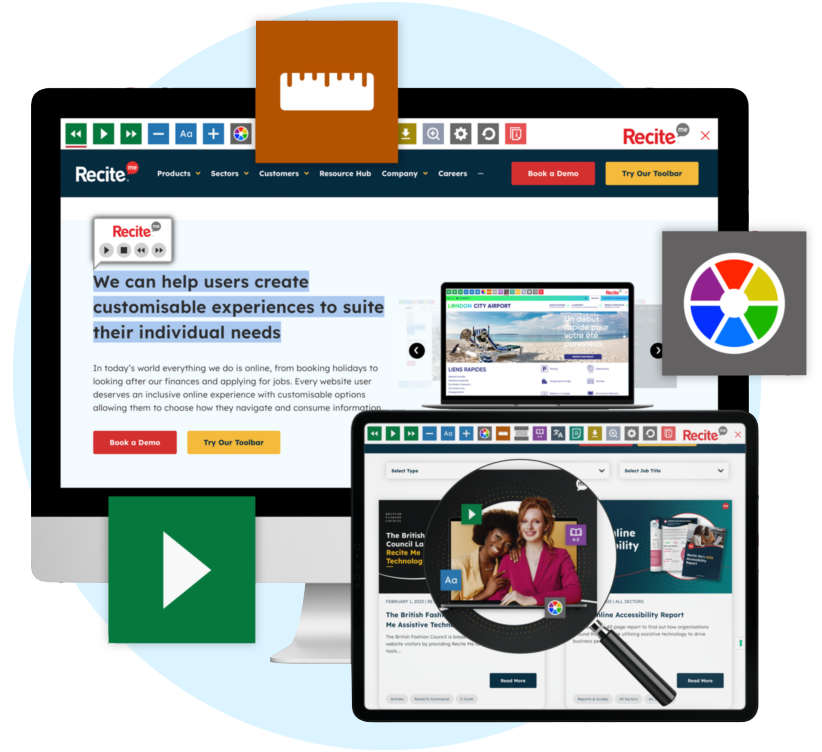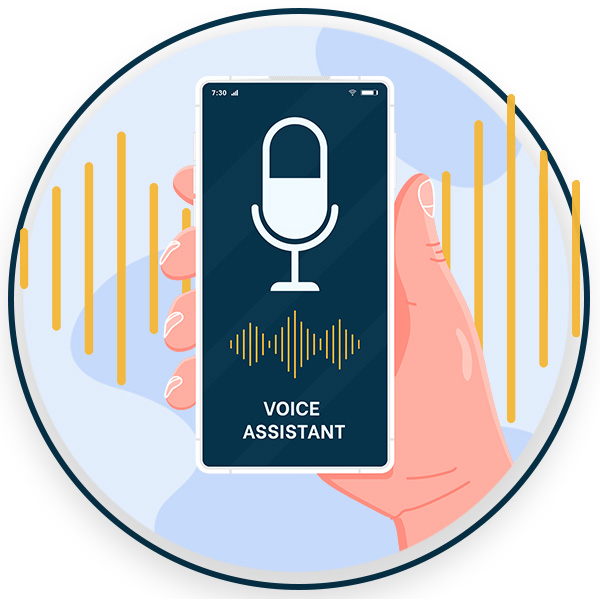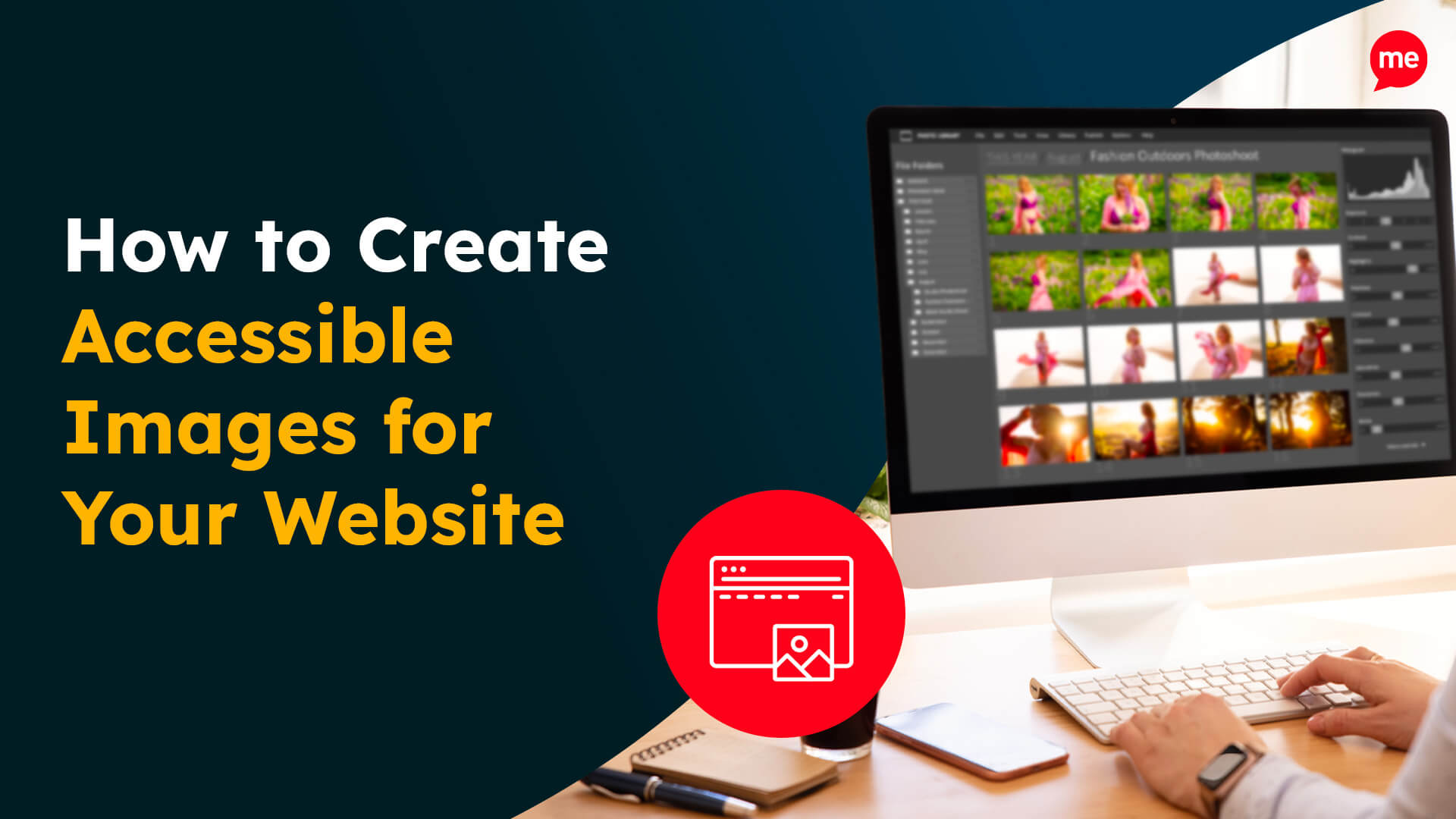Get Your Free Accessibility & Inclusion Toolkit
Download NowAssistive Technology has drastically advanced the way disabled and elderly people interact with the world in the last few decades. Helping to encourage independence, improve capabilities and enhance inclusivity. The way we look at assistive technologies over the years has changed, especially with the digitalisation of our current world in recent times. As the technology continues to become more advanced, many people have chosen to divide assistive technology into three categories; High-tech, Mid-tech and Low-tech. In this article we will explore the importance of High-tech assistive technology, including its applications and benefits.
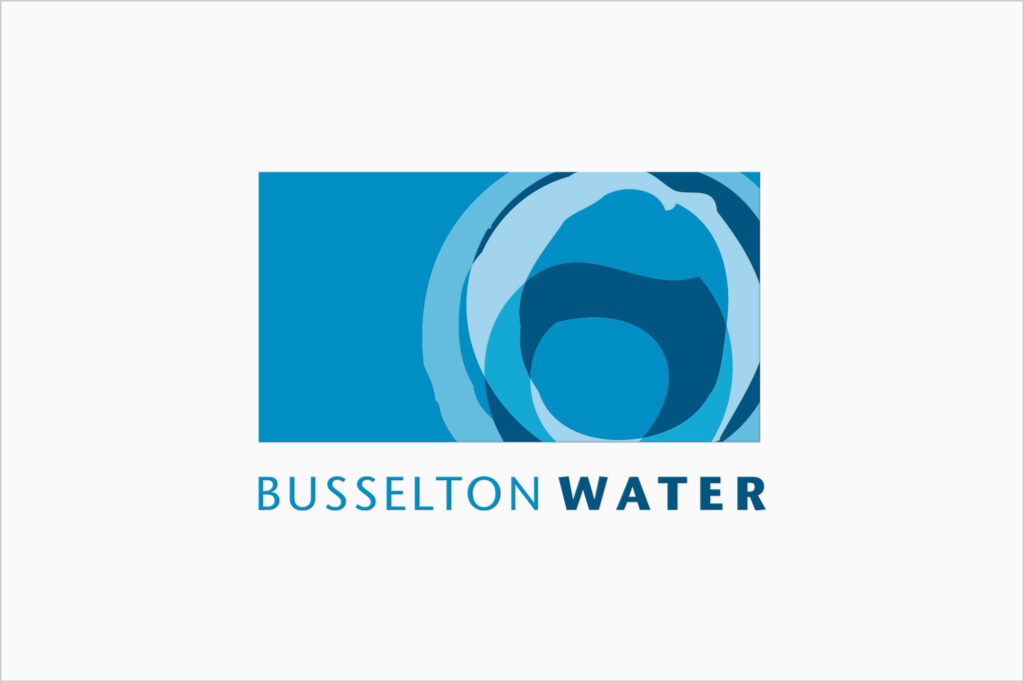
What is High-Tech Assistive Technology?
High-Tech Assistive Technology refers to advanced electronic and computer-based tools specifically designed to enhance the independence, accessibility, and quality of life for individuals with disabilities. The primary goal is to mitigate accessibility barriers faced by people with disabilities, enabling them to perform tasks, communicate effectively, and engage in daily activities through the integration of sophisticated hardware, software, and artificial intelligence.
What is the difference between High-Tech and Low-Tech Assistive Technology?
The difference between high-tech and low-tech assistive technology is the level of complexity and sophistication of the technology and tools used. High-tech refers to an advanced tool that usually involves advanced electronic and computer based devices, leveraging technologies such as artificial intelligence and complex algorithms. Whereas Low-tech refers to simpler, non-electronic tools that do not rely heavily on advanced technology.
An example of a high-tech assistive technology would be a screen reader or smart home automation system. Whereas, low-tech technology examples could include wheelchairs, magnifiers and pencil grips.
Types of High-Tech Assistive Technology
There are many different types of High-tech Assistive Technologies available to assist a variety of different individual needs. Helping disabled people, the elderly and even able bodied people to improve their everyday life. Here are a few of the best high-tech assistive technology examples:
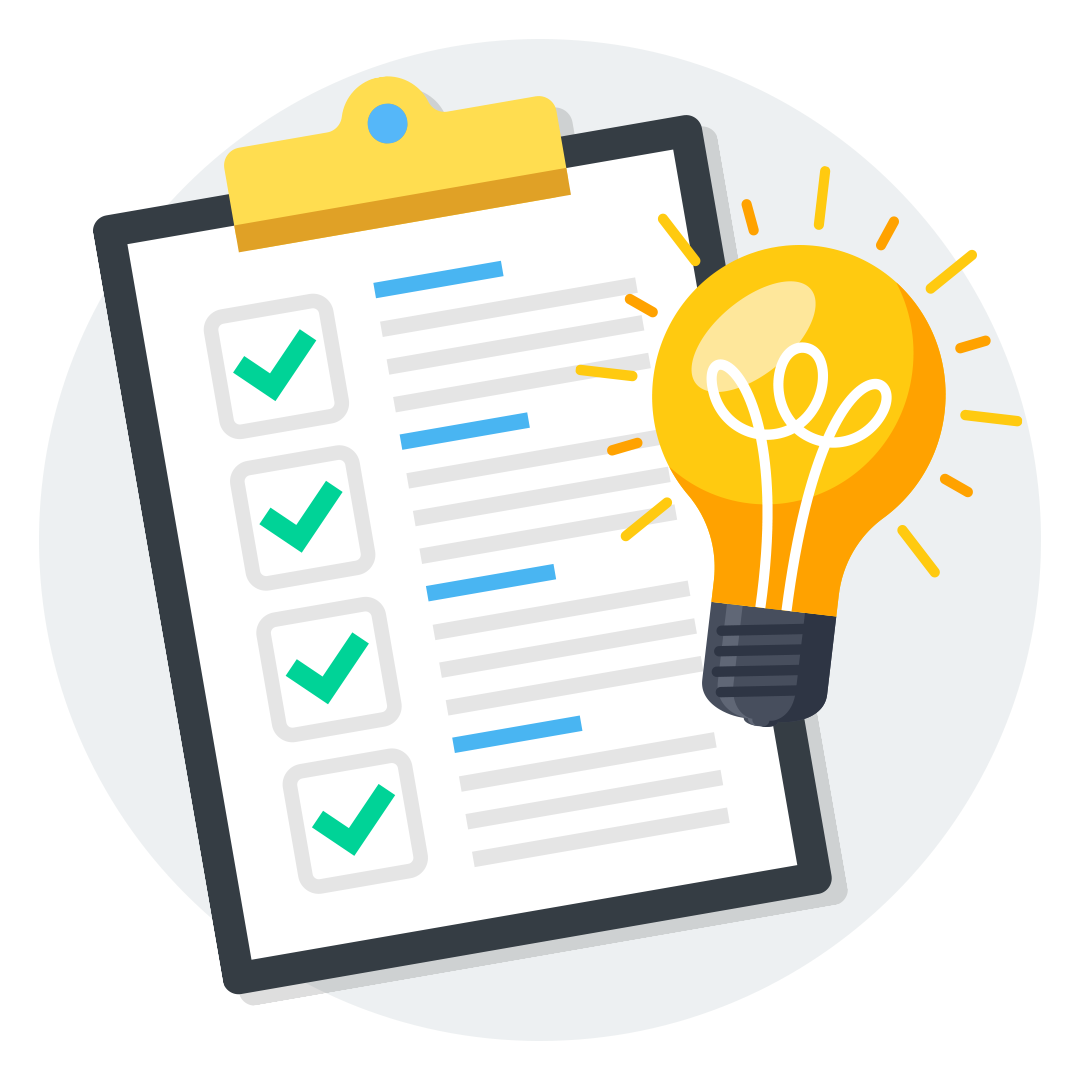
Communication Devices
There are numerous high-tech assistive technologies for communication, that help a range of different individuals, including those with speech impairments or people who are non-verbal. Examples include speech-generating devices that can create synthesised speech from written text. This allows users to communicate through written text in an audio/verbal format, enabling these people to contribute and express themselves effectively.
Adaptive Keyboards and Mice
Adaptive Keyboards and Mice are specialised pieces of hardware that help individuals with different physical and mobility challenges. These tools are a great example of how assistive technology benefits conditions like cerebral palsy. As they enable these individuals with the tools they need to fight back against any coordination and movement problems. Allowing them to use and experience all of the different websites and digital services the internet has to offer to the best of their ability. You can learn more about the importance of keyboard accessibility in general here.
Screen Readers
A Screen Reader is a type of high-tech assistive technology tool that provides a spoken feedback of the written words on a web-page, computer document or screen. For a user the application of this tool is that they are able to listen to the content instead of reading it themselves. Which is why this is such a good assistive technology for people with visual impairments. Although it can also be useful for conditions such as ADHD, where users are faced with concentration difficulties, the ability to have the content read by a 3rd party tool can help with this.
Assistive Learning Softwares
Assistive Technology has been used extensively in various education and special education settings. Different types of specialised high-tech assistive softwares can be leveraged to meet the needs of specific disabilities in the classroom.
One example could include how assistive software benefits people with dyslexia. As people with this disability generally experience difficulties with both words and numbers. Making spelling, grammar and mathematics a difficult challenge for many. However, there are various assistive maths software’s available, they can customise the way data is presented, moving numbers into charts, graphs or diagrams. There are also various spell-checking tools which can be used to improve the accuracy of spelling, punctuation and grammar for its users.
Screen Magnifiers
Screen Magnifiers are one of the simpler high-tech assistive technologies to think about, but their creation and integration can still be quite complex. They work by magnifying and manipulating the user’s computer screen to make information more visible for the user. This is again another benefit for those with visual impairments, but is also a great assistive technology for the elderly, who also usually suffer from low vision in their old age.
Screen Masks
Screen Masks provide a similar functionality and use to Screen Magnifiers. A Screen Mask will allow the user to cover sections of the page with a tint, essentially minimising unfocused areas. This helps to reduce screen glare, increase focus and reduce eye strain, all of which can be useful when reading. This is another technology that provides a range of applications for a diverse set of users, it can help visually impaired people, the elderly and even those with conditions such as autism, ADHD and more.
Voice Assistant
Voice Assistant is a type of technology that follows audio commands from the user. Popular examples of this include the likes of Siri (Apple) and Alexa (Amazon). These are pieces of revolutionary technology that have changed the way we interact with the world on a daily basis. From simple things such as making a phone call, to more technical requests like changing the temperature in a room or controlling the lighting around the room. For people with disabilities, voice assistant is an amazing features, as it can offer a lot of hands-free interaction. The benefit of this is clear for people who have difficulties with mobility or motor impairments, but it’s also great for people with low vision and those who struggle writing and/or reading.
Our 40-page Digital Accessibility & Inclusion Toolkit helps businesses break down online barriers and make a real impact. It offers practical advice on all aspects of digital accessibility, from writing an accessibility statement to accessible website tips and inclusive hiring.
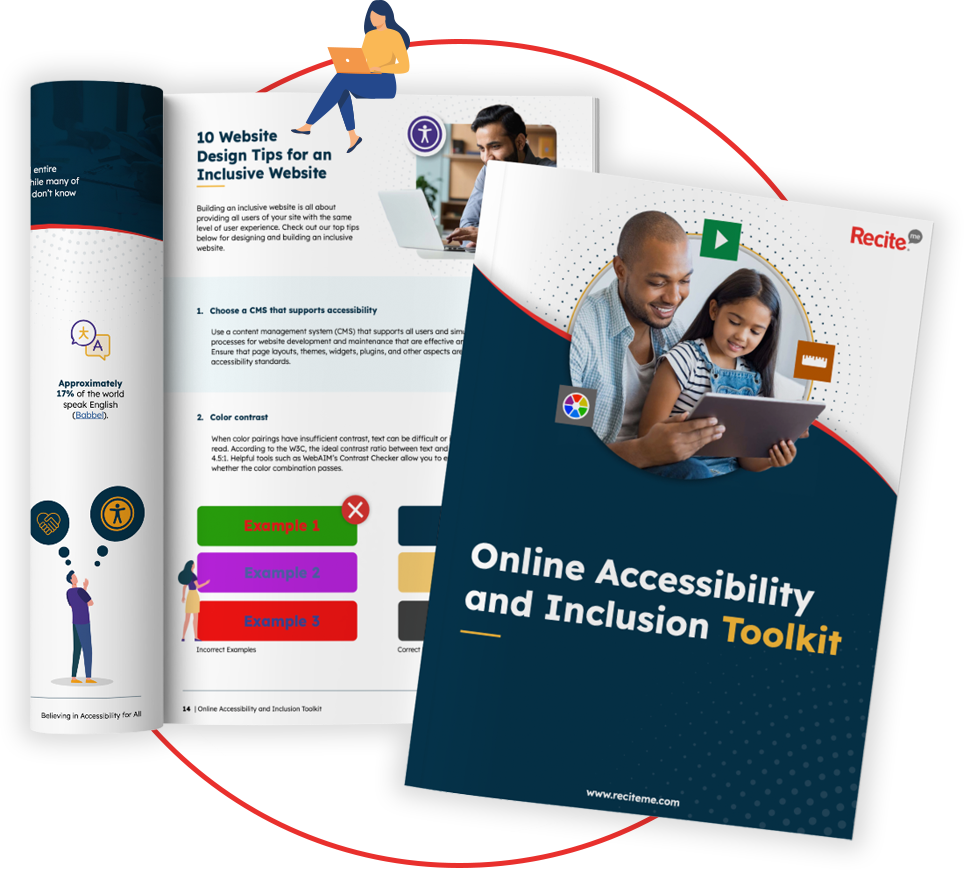
Benefits of High-Tech Assistive Tech
The adoption and use of High-Tech Assistive Technology offer numerous benefits to individuals with disabilities, enhancing their overall quality of life and promoting inclusivity. Here are some key benefits:
- Enhanced Independence: High-Tech Assistive Technology provides individuals with disabilities the tools to perform various tasks independently, reducing reliance on others for daily activities.
- Improved Communication: Communication devices and apps enable individuals with speech impairments to express themselves effectively, fostering better interpersonal connections and social participation.
- Access to Information: Screen readers, Braille displays, and other technologies facilitate access to digital information, allowing individuals with visual impairments to navigate the internet, read documents, and stay informed.
- Increased Mobility: Advanced mobility aids, including smart wheelchairs and exoskeletons, enhance the mobility and transportation options for individuals with physical disabilities, promoting greater freedom of movement.
- Educational Opportunities: High-Tech Assistive Technology in education, such as specialised software and communication devices, supports students with learning disabilities, providing tailored learning experiences and promoting academic success.
- Employment Opportunities: Assistive technology in the workplace, including adaptive computer input devices and communication aids, helps individuals with disabilities access and perform job tasks, improving employment opportunities and workplace inclusion.
- Greater Access to Entertainment and Recreation: Smart home technology and environmental control systems enable individuals with disabilities to independently control entertainment systems, lighting, and other aspects of their living environment, enhancing recreational experiences.
- Health Monitoring: Wearable assistive technology, such as smartwatches with health monitoring features, can help individuals with chronic conditions or disabilities track and manage their health, promoting overall well-being.
- Social Inclusion: High-Tech Assistive Technology fosters social inclusion by providing individuals with disabilities the means to communicate, access information, and participate in various activities, both online and offline.
How Recite Me uses High Tech Assistive Technology
At Recite Me we leverage a variety of different High-tech Assistive Technologies in our products. Our core product, the Recite Me Accessibility Toolbar has a large volume of high-tech assistive technologies integrated within it. Some of the Toolbars main features include:
- Ability to customise font size, colour and type.
- Select your own colour contrast between text & background.
- Screen mask, ruler & magnifier tools for reading.
- Text-to-speech with a choice of 65+ languages.
- Translate to 100+ on-screen languages.
- Built-in spell-checker, dictionary & thesaurus.
- Download web content as an audio file.
